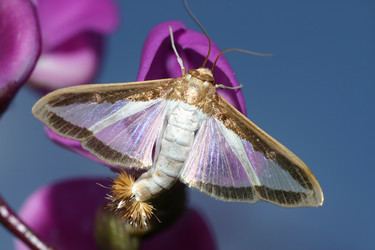Rank Family | Division Ditrysia Scientific name Crambidae Higher classification Pyraloidea Order Butterflies and moths | |
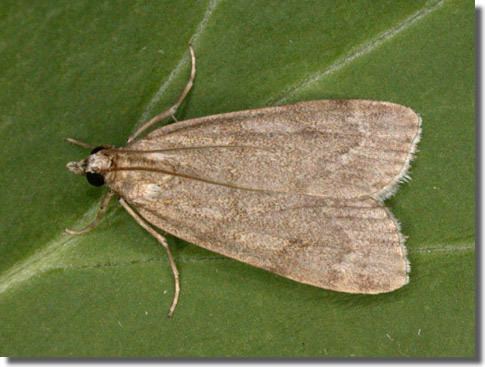 | ||
Lower classifications | ||
Snout moth crambini sp ditrysia pyraloidea crambidae
The Crambidae are the grass moth family of Lepidoptera (butterflies and moths). They are quite variable in appearance, the nominal subfamily Crambinae (grass moths) taking up closely folded postures on grass stems where they are inconspicuous, while other subfamilies include brightly coloured and patterned insects which rest in wing-spread attitudes.
Contents
- Snout moth crambini sp ditrysia pyraloidea crambidae
- Alfalfa webworm moth crambidae loxostege cereralis dorsal view
- Taxonomy
- Relationship with Humans
- References
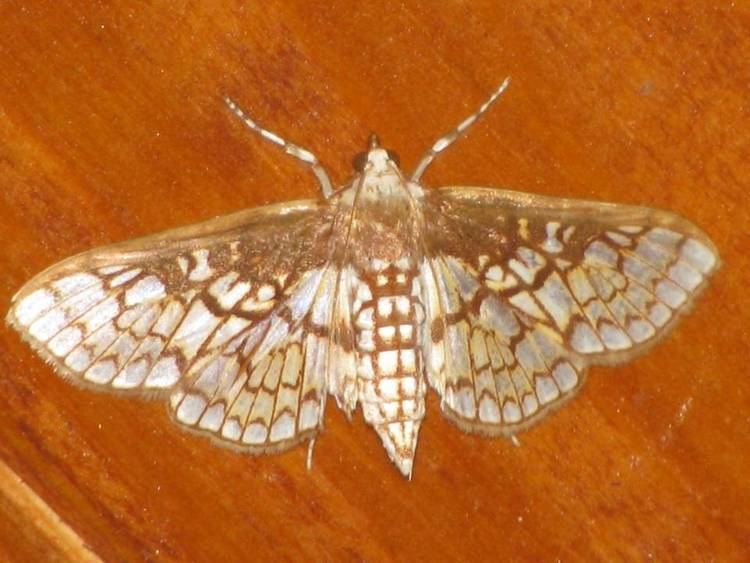
In many classifications, the Crambidae have been treated as a subfamily of the Pyralidae or snout-moths. The principal difference is a structure in the ears called the praecinctorium, which joins two tympanic membranes in the Crambidae, and is absent from the Pyralidae. The latest review by Munroe and Solis, in Kristensen (1999), retains the Crambidae as a full family.
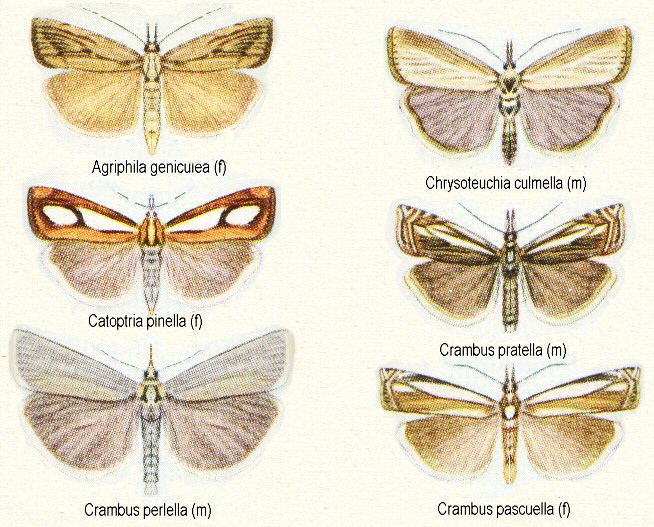
Alfalfa webworm moth crambidae loxostege cereralis dorsal view
Taxonomy
Relationship with Humans
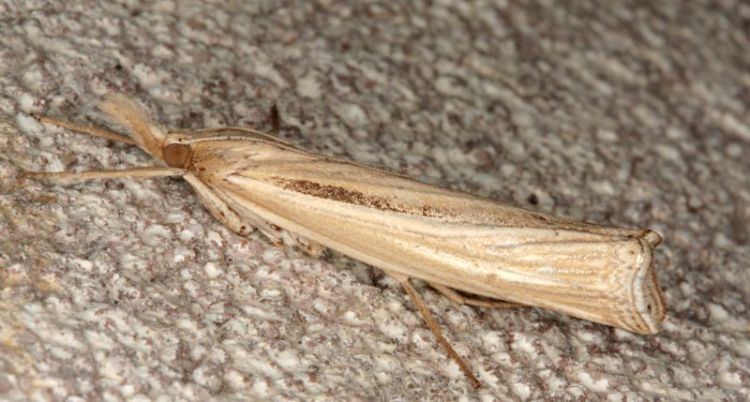
Since crambids are relatively common throughout human settlements, the moths tend to affect crops and gardens, whether harmfully, beneficially or harmlessly. Beneficial crambids include the water hyacinth moth (Niphograpta albiguttalis), used to control its host (Eichhornia crassipes), the water veneer (Acentria ephemerella), a biocontrol agent used against Eurasian watermilfoil), and the bamboo borer (Omphisa fuscidentalis), of which the caterpillars are used for human consumption (see entomophagy). The mint moth (Pyrausta aurata) is an example of a harmless crambid. Crambid larvae are typically stem borers in plants of the grass family. As this family contains many important crops, some Crambidae species achieve pest status. The European corn borer Ostrinia nubilalis is perhaps the best known; introduced to the United States in the early 1900s, it is now widespread in all but the westernmost states. Other pest species include the spotted stalk borer (Chilo partellus), the Asiatic rice borer (Chilo suppressalis), sod webworms (Crambus spp.), Duponchelia fovealis, the sugarcane borer (Diatraea saccharalis), bean pod borers (Maruca spp.), the rice white stemborer (Scirpophaga innotata), the southwestern corn borer (Diatraea grandiosella), and the grape leaffolder (Desmia maculalis).
